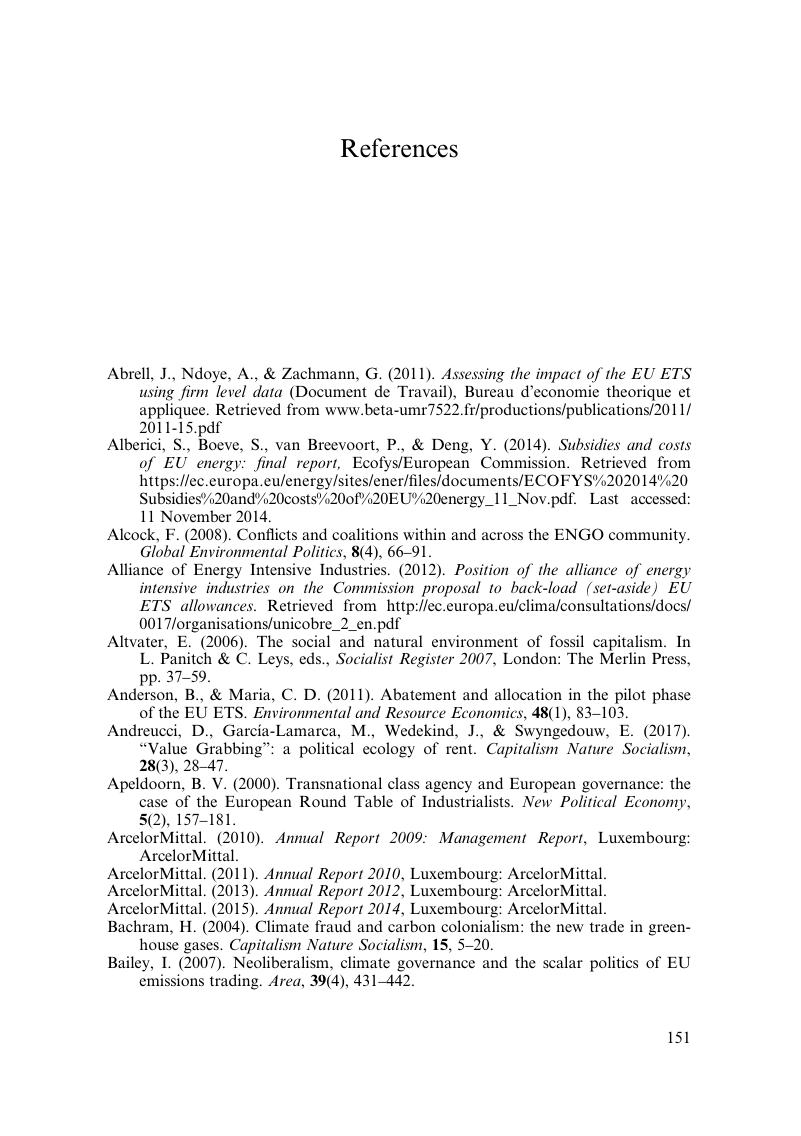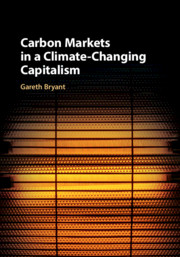Book contents
- Carbon Markets in a Climate-Changing Capitalism
- Carbon Markets in a Climate-Changing Capitalism
- Copyright page
- Dedication
- Contents
- Acknowledgements
- Introduction
- 1 Conceptualising Carbon
- 2 Internalising Carbon
- 3 Externalising Carbon
- 4 Valuing Carbon
- 5 Contesting Carbon
- Conclusion
- References
- Index
- References
References
Published online by Cambridge University Press: 08 February 2019
- Carbon Markets in a Climate-Changing Capitalism
- Carbon Markets in a Climate-Changing Capitalism
- Copyright page
- Dedication
- Contents
- Acknowledgements
- Introduction
- 1 Conceptualising Carbon
- 2 Internalising Carbon
- 3 Externalising Carbon
- 4 Valuing Carbon
- 5 Contesting Carbon
- Conclusion
- References
- Index
- References
Summary

- Type
- Chapter
- Information
- Carbon Markets in a Climate-Changing Capitalism , pp. 151 - 178Publisher: Cambridge University PressPrint publication year: 2019

